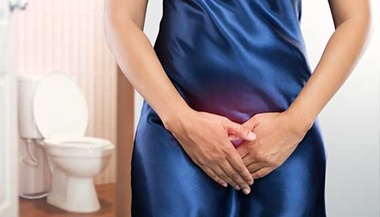Rectal Prolapse
What is rectal prolapse?
Your rectum is the last part of your colon. It’s where stool forms before you have a bowel movement. Rectal prolapse is when part of the rectum bulges out of the anus.
At first, a prolapse may happen only after a bowel movement. The prolapsed part of the rectum may then slip back through the anal canal on its own. Over time, the prolapse may become more severe and may need surgery.
What causes rectal prolapse?
Rectal prolapse is most often caused by the muscles that support the rectum getting weak. This can happen from constipation, damage from giving birth, or defects in the pelvis or lower gastrointestinal tract.
Who is at risk for rectal prolapse?
Rectal prolapse is more common in people age 50 and older. Women are more likely to have the condition than men. Younger people with the condition often have chronic health conditions and take several medicines.
A person is more at risk for rectal prolapse if any of the following occur:
-
A long history of constipation
-
Straining to have bowel movements
-
Long-term (chronic) diarrhea
-
Laxative abuse
-
Childbirth
-
Spinal cord problems or previous stroke
-
Cystic fibrosis
-
Dementia
What are the symptoms of rectal prolapse?
Symptoms can occur a bit differently in each person. They can include:
-
Feeling a bulge from the anus after coughing, sneezing, or lifting
-
Having mucus in your stool
-
Straining to start or finish a bowel movement
-
Having incomplete bowel movements
-
Having belly (abdominal) discomfort or pain
-
Bleeding from the rectum
-
Trouble controlling bowel movements (fecal incontinence)
-
Having to push the prolapse back into the anus by hand
-
Feeling pressure in your rectum
-
Being constipated
-
Having anal pain, bleeding, or itching
The symptoms of rectal prolapse may look like other health conditions. Always see your healthcare provider for a diagnosis.
How is rectal prolapse diagnosed?
Your healthcare provider will ask about your symptoms and health history. Your provider will give you a physical exam. You may be asked to squat and strain as if you are having a bowel movement. You may also have tests, such as:
-
Defecogram. This test is a type of X-ray taken during a simulated bowel movement.
-
Anorectal manometry. A pressure-measuring tube is placed in the rectum. This is done to measure how well the muscles that control bowel movements are working.
-
Colonoscopy. A flexible tube with a camera is placed inside the rectum so the healthcare provider can do a visual exam.
-
Barium enema. X-ray pictures are taken after a type of chalky contrast solution is placed in the rectum.
-
MRI. A special MRI can be done during simulated bowel movement.
-
Special urologic or gynecologic evaluations. Your provider will also assess the rest of your pelvic floor. Your provider will look for weakness or signs of other organs prolapsing. These might be the bladder or uterus. This test is also done if a woman has both rectal prolapse and uterine prolapse.
How is rectal prolapse treated?
Treatment will depend on your symptoms, your age, and your general health. It will also depend on how severe the condition is. Treatment often begins with steps to prevent constipation and straining.
If your rectal prolapse is severe and interferes with your quality of life, your healthcare provider may advise surgery. Types of surgery include:
-
Repair through the abdomen. A cut is made through the lower belly. The rectum is attached to the lower part of the backbone to support it and keep it in place.
-
Repair through the rectum. Your surgeon removes the part of the rectum that has prolapsed and reconnects the remaining parts. Or sometimes the inner lining of the rectum is removed, and the muscle is sewn back on itself.
-
Repair with both these methods. These two methods may be combined to treat your prolapse.
Talk with your healthcare providers about the risks, benefits, and possible side effects of all treatments.
What are possible complications of rectal prolapse?
The two main possible complications are:
-
The rectal prolapse can’t be pushed back into the rectum. It can cause the blood supply to the prolapse to be cut off. This is called strangulation. It’s painful and needs emergency treatment.
-
The rectal prolapse happens again. This is common. Following your healthcare provider’s advice on lifestyle changes can help prevent it happening again. That means preventing constipation. Lifestyle changes may include eating a high-fiber diet and drinking enough water.
Can rectal prolapse be prevented?
Not straining during a bowel movement can help prevent the condition. Follow your healthcare provider’s advice for ways to prevent constipation.
How to manage rectal prolapse
These tips for managing rectal prolapse before or after surgery may help:
-
Don’t do any activities that increase pressure in your rectal area. This includes straining to have a bowel movement or heavy lifting.
-
If you have an ongoing cough, have it treated by your healthcare provider. They may also urge you to stop smoking.
-
Eat at least 5 servings of fruits and vegetables every day. A high-fiber diet can help prevent constipation and straining.
-
Drink 6 to 8 glasses of water every day.
-
If you are constipated, ask your healthcare provider about stool softeners or laxatives.
-
Stay active and get regular exercise. If you are overweight, take steps to get to a healthy weight.






